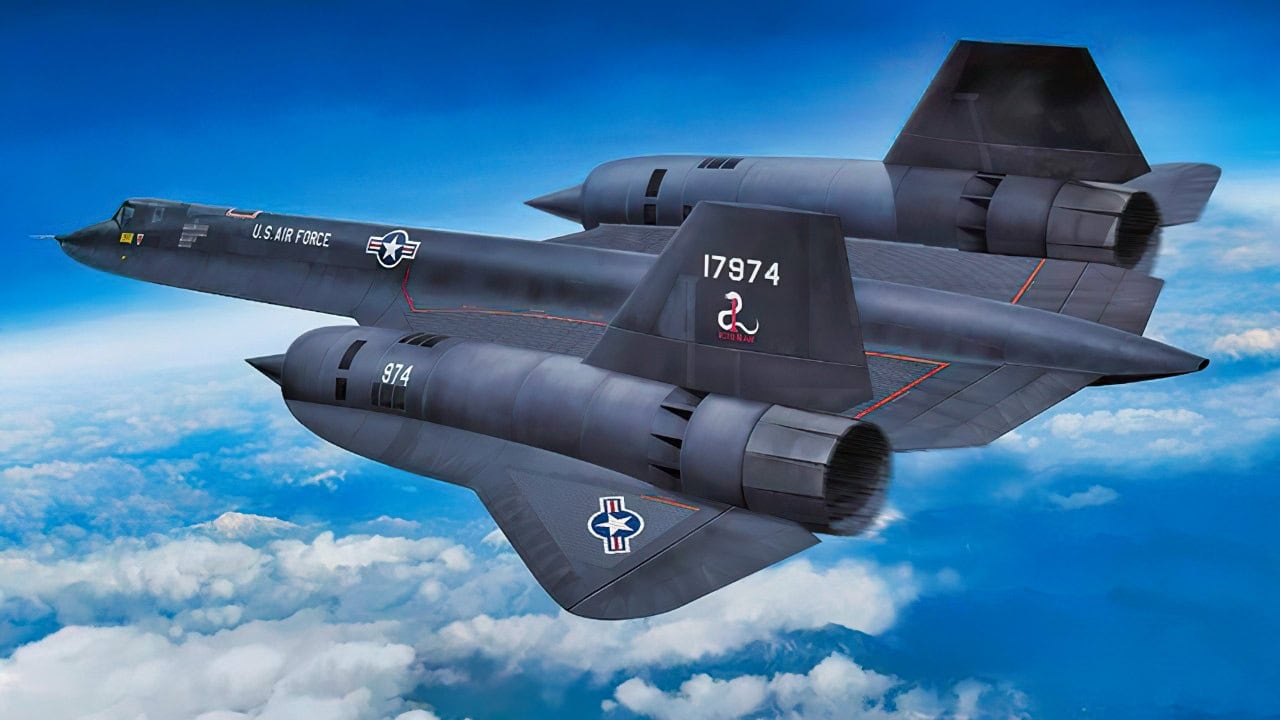The SR-72 Problem: No one can 100% can confirm it exists, unless you watch Top Gun Maverick.
Lockheed Martin’s Skunk Works has been working on the SR-72, a future hypersonic reconnaissance aircraft that aims to fulfill critical intelligence functions for the U.S. Air Force.
The “Son of Blackbird,” or “Darkstar,” as it has been variously called, is rumored to be expected to fly at more than Mach 6 (about 4,100 miles per hour), which would make it the fastest aircraft in history.
The SR-72 would bring improved stealth and even more speed than the famed SR-71, as well as the ability to fire hypersonic conventional or nuclear-tipped missiles.
The SR-72 Engine Is the Key Component
Skunk Works, in cooperation with Aerojet Rocketdyne, has reportedly built an advanced turbine-based combined cycle (TBCC) engine for subsonic flight, and a scramjet for extreme speeds.
The latter would push the optionally piloted aircraft to Mach 6, twice the speed of an SR-71.
The SR-72 will be powered by two engines. The aircraft will receive thrust from the turbine engine until it reaches a speed of Mach 3, while the dual-mode ramjet will deliver power for flight at hypersonic speeds. The aircraft will use a single inlet nozzle for both the turbine engine and ramjet, to reduce drag.
The subscale ground tests of the TBCC system were performed by integrating a small off-the-shelf turbine engine with a dual mode ramjet/scramjet integrating an axisymmetric inlet and a nozzle.
The first engine would be either a Pratt & Whitney F100, or a General Electric F110.
This turbofan would allow the aircraft to take off and accelerate to supersonic speeds like any normal fighter, but once the jet began to approach Mach 3, the second engine would take over.
That second engine, according to some reports, might be a dual-mode scramjet that relies on the immense pressure of inflowing air at supersonic speeds, as well as a variable-inlet design, to create intentionally placed shockwaves for compression.
As a result, this engine could power an aircraft past the SR-71’s record-setting top speed of Mach 3.2; past the hypersonic barrier at Mach 5; and potentially even past Top Gun’s fictional Darkstar at Mach 10.
Speed and Stealth Make A Hard Target
The SR-72’s projected speed will be incredible; imagine flying from New York to Los Angeles in 30 minutes. Such speeds would also make it much harder for an enemy to target and shoot down.
Russian S-400 anti-aircraft missiles would not be able to reach the SR-72’s altitudes while the Son of Blackbird locates strategic intelligence with pinpoint accuracy.
The SR-72 should also be autonomous. AI guidance features would allow it to function as an unmanned aircraft that can efficiently execute reconnaissance or strike missions.
As an unmanned aircraft, it could accomplish high-speed, high-G turns that a pilot could not handle.
Hypersonic Missiles for the SR-72?
Rob Weiss, Lockheed Martin’s executive vice president and general manager for Advanced Development Programs, said in 2017, “We’ve been saying hypersonics is two years away for the last 20 years, but all I can say is the technology is mature and we, along with DARPA and the services, are working hard to get that capability into the hands of our warfighters as soon as possible.”
Sandboxx News wrote about the secretive development of SR-72, and its potential path toward service in the future.
Lockheed Martin is continuing to self-fund the development of the SR-72 and reportedly has gone in the hole for $335 million on the project since 2022.
However, the company likely trusts that the Pentagon knows the platform’s value and will be willing to pay enough for a production fleet to allow Lockheed to recover its development losses.
In February 2018, Lockheed Martin Vice President of Strategy and Customer Requirements in Advanced Development Programs Jack O’Banion told the American Institute of Aeronautics and Astronautics SciTech Forum that the SR-72 Flight Research Vehicle was already flying.
As quoted by the Wall Street Journal, O’Banion said, “The aircraft is also agile at hypersonic speeds, with reliable engine starts.”
Shortly after that forum, all mentions of the SR-72 disappeared from Lockheed Martin’s website. But the project wasn’t shut down. Lockheed in 2021 finished building a huge new factory called Building 648.
The company touted it as an “intelligent, flexible factory” and immediately went on a hiring spree, adding more than 2,300 workers.
All signs indicate that the SR-72 and B-21 Raider are coming online before 2030.
About the Author: Steve Balestrieri
Steve Balestrieri is a 19FortyFive National Security Columnist. He served as a US Army Special Forces NCO and Warrant Officer. In addition to writing for 19FortyFive, he covers the NFL for PatsFans.com and is a member of the Pro Football Writers of America (PFWA). His work was regularly featured in many military publications.

